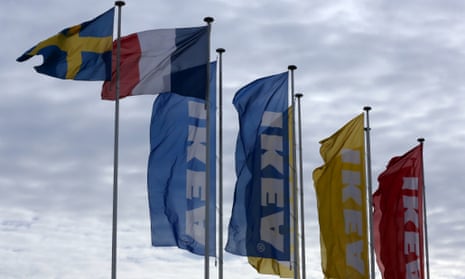On 13 October 1994, the Swedish public voted to join the expanding European Union after almost exactly four years of negotiation culminated in a national referendum.
The result was relatively narrow with 52.3% of the electorate deciding to join the union. The vote had attracted a high turnout of 83%. It was approved by the parliament a month later, with the Swedes joining the EU alongside Austria and Finland in January 1995.
The country was already popular around Europe’s - and the world’s airwaves - producing the highest number of charting musicians per capita of any country between 1960 and 2007.
Links with other members of the union have brought Sweden and the rest of the continent even closer. Trade with other EU members is up, as is the number of citizens from EU member states living in Sweden. There are also almost three times the number of Ikea stores in current EU countries as there was at the start of 1995 - not to mention their production of arguably the best Eurovision song ever.
Eurosceptic parties across the continent saw rises in their votes during this year’s European parliament elections, but how do Swedes feel about the union now?
A poll by SVT and Sifo asked whether it was the right decision to join the EU - 57% of respondents said yes compared to 23% that said no. Sweden is generally happy with its choice.
The population of Sweden has risen by a considerable margin of 9.2% in the years since it voted to join the EU although it still remains a comparatively small country within the union (about 1/6th the size of the UK).
We have looked at how the number of citizens from EU15 countries - those that were in the union at the time Sweden joined - has changed. It has risen but only by a small amount - looking at the longer term trends shows this is mostly attributable to a large scale reduction in the number of Finns in Sweden! Sweden has become a popular residence for citizens of many other countries across the union.
There is no question that the Swedish economy has shown a lot of improvement since it joined the union. GDP per capita now stands just under $60,000, which is twice what it was in its last year outside of the union in 1994.
In 2013, 57% of Sweden’s net trade was with EU member states. One reason it is not higher is due to neighbour Norway not being in the union.
Arguably Sweden’s most lasting export will be the Ikea stores, which pioneered flatpack furniture - even though the company’s headquarters are now in the Netherlands. Since 1994, the number of stores in EU member states has almost tripled.
The Lithuanian president opened the first Ikea store in the country last year and there are now stores in Cyprus, Slovakia, Hungary and Croatia.
The Swedish tourist board said that every day around 1.8m meatballs are eaten in Ikea stores across the globe. Adjusting that for the number of stores within the EU, we estimate that the union will have munched on 1.31m köttbullar each day. Aren’t you glad Sweden joined the EU?

Comments (…)
Sign in or create your Guardian account to join the discussion